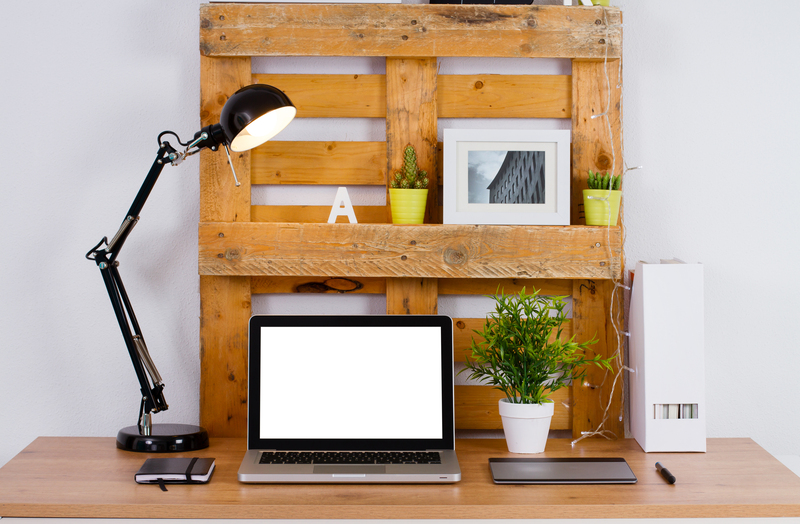Unlock the Benefits of a Clutter-Free Office
In today's dynamic business world, an organized workspace is more valuable than ever. A clutter-free office is not just a trend; it's a necessity for businesses and professionals who want to increase productivity, reduce stress, and maintain a healthy work environment. From improved concentration to creating lasting impressions, the advantages of decluttering your office are abundant. If you're wondering how to achieve a clean, organized office or why you should, you're in the right place. Let's explore how you can unlock the transformative benefits of a clutter-free workspace.

Why Is a Clutter-Free Office So Important?
A clutter-free office is more than just visually appealing; it's foundational for optimal workflow and mental focus. Disorganization can lead to misplaced documents, constant distractions, and wasted time. The impact of clutter often goes unnoticed until it's removed--then, the boost in productivity and well-being becomes undeniable.
The Psychological Impact of Office Clutter
Numerous studies confirm a link between physical clutter and increased stress and anxiety. Visual chaos can cause cognitive overload, making it difficult for your mind to process information and focus on tasks. In contrast, a minimalist, organized environment fosters calm, clarity, and creativity.
- Reduced Stress: A tidy workspace minimizes distractions and stress triggers.
- Improved Concentration: Less clutter means fewer interruptions, enhancing your ability to concentrate.
- Boosted Morale: Employees working in clean offices report higher job satisfaction and feel more motivated.
The Benefits of a Clean, Organized Office Space
Unlocking the benefits of a clutter-free office goes far beyond achieving a neat appearance. Below, we break down the key reasons every business should prioritize a clutter-free workspace:
1. Enhanced Productivity
When your office is free from unnecessary items, every tool and document is easily accessible. No more wasting time searching for lost files, supplies, or notes. Employees with organized desks can spend more time focusing on meaningful work. Studies from Princeton University Neuroscience Institute show that clutter competes for your attention, reducing your brain's capacity to process information--a direct hindrance to productivity.
- Quick access to important documents
- Streamlined workflows and fewer interruptions
- Reduced time wasted on searching for items
2. Creates a Professional Image
First impressions matter. Whether it's clients, new hires, or business partners, visitors' perception of your business begins the moment they step into your office. A clutter-free environment reflects professionalism, attention to detail, and organizational competence. It signals respect for clients and pride in your work.
- Visually appealing office spaces leave a lasting positive impression
- Promotes trust and confidence in your business
- Reflects your brand's commitment to excellence
3. Supports Health and Safety
A messy office isn't just unsightly--it can be hazardous. Cluttered walkways and stacked items raise the risk of accidents, especially in busy work environments. Furthermore, piles of paper and unused equipment collect dust and allergens, which can contribute to health issues.
A clean and organized office reduces these risks, promoting a healthier and safer workplace for everyone.
- Minimized tripping hazards
- Reduced dust and allergens
- Better air quality and improved well-being
4. Enhances Creativity and Innovation
Creative thinking thrives in an uncluttered environment. A clutter-free workspace reduces mental fatigue and removes visual barriers, allowing employees to brainstorm freely. When desks, walls, and common areas are tidy, team members feel inspired to generate new ideas and solutions.
5. Efficient Use of Space
Maximizing your office's available space is essential, especially as company size grows. Redundant items, outdated technology, and unused furniture can quickly make a room feel crowded. By decluttering regularly, businesses create multifunctional areas for collaboration, meetings, or relaxation, making the most of every square foot.
- Increased usable space for productive tasks
- Flexible work areas for teams or individuals
- Room for amenities that boost employee satisfaction
6. Simplifies Office Maintenance
Cleaning a cluttered office takes more time and effort. Dusting around stacks of paper and office supplies is inefficient and leads to neglected areas.
A tidy, well-organized office can be cleaned quickly and thoroughly, ensuring a consistently pleasant environment.
- Faster cleaning routines
- Less chance of pest infestations
- Consistently fresh environment
How to Achieve a Clutter-Free Office
Transitioning to a clutter-free office may seem daunting, but with a structured plan, it's not only achievable--it's sustainable! Follow these practical steps to transform your office into an efficient, inspiring place to work:
Step 1: Commit to a Declutter Mindset
Effective decluttering starts with a shift in attitude. Encourage your team to view the process not as a chore, but as an investment in productivity and well-being. Emphasize the tangible rewards--less stress, more time, and a better quality of work life.
Step 2: Perform a Thorough Audit
Begin by identifying all items in your workspace--documents, equipment, decorations, supplies, and furniture. Assess their necessity and frequency of use. Group similar items together, making it easier to spot redundancies. Ask yourself: Does this object serve a daily or essential purpose? If not, it may be time to let it go.
Step 3: Organize for Accessibility
Once the clutter is cleared, organize what's left based on how often items are used. Store frequently needed items within arm's reach, and keep less-used tools in designated storage spaces. Use storage solutions that maximize your office layout--such as filing cabinets, modular shelves, and desk organizers.
- Label files and drawers clearly
- Implement cable management systems to reduce visual clutter
- Use digital storage to minimize paper usage
Step 4: Embrace a Paperless Office
Digitalization is a key element of a clutter-free workspace. Convert paper documents to secure, easily accessible electronic files. Cloud storage and secure backups reduce the need for file cabinets and make information retrieval effortless.
- Scan important paperwork regularly
- Implement cloud-based collaboration tools
- Recycle unnecessary printouts
Step 5: Create Daily & Weekly Routines
Consistency is crucial to maintaining an organized office. Encourage daily habits such as clearing desks at the end of each day and a deeper tidy-up at the end of each week. Consider assigning rotating "organization champions" to remind and motivate the team.
- Set aside 5-10 minutes per day for 'reset time'
- Review and clear digital desktops weekly
- Host monthly clean-up challenges for team engagement
Step 6: Invest in Smart Storage Solutions
Modern offices can benefit from innovative storage options. Use space-saving furniture, vertical shelving, and multifunctional units to optimize your workspace. Mobile carts, rolling filing cabinets, and under-desk storage keep essential items nearby without cluttering visible surfaces.
Step 7: Personalize Without Overcrowding
While minimalism is key, a sterile office isn't the goal. Encourage personal touches--like a single framed photo, a plant, or a favorite mug--that spark joy and motivation. The trick is to balance individuality with functionality, ensuring that personalization never impedes desk space or workflow.
Common Clutter Traps and How to Avoid Them
Preventing office clutter is easier when you know where it likes to hide. Here are common trouble spots and strategies for keeping them tidy:
- Paper piles: Scan, file, or shred incoming documents immediately. Use inbox/outbox trays for sorting.
- Unmanaged cables: Use cable organizers, clips, or wireless devices to keep cords hidden.
- Overloaded bulletin boards: Set regular reminders to remove outdated notes, to-do lists, and announcements.
- Junk drawers: Limit each desk to one drawer for necessary tools only--clean it out monthly.
- Shared spaces: Assign responsibility for break rooms, meeting areas, and supply closets to specific staff.
How to Maintain a Clutter-Free Office Long-Term
Achieving an organized office is one thing; maintaining it as your business evolves is another. Here are practical tips for sustaining long-term organization:
- Establish clear policies and regular training on office cleanliness and document management
- Encourage digital workflows to minimize physical paperwork
- Schedule quarterly office audits for ongoing decluttering
- Foster a culture of responsibility, where everyone contributes to an orderly environment

Technology and Tools for an Organized Office
Leverage technology to make your clutter-free environment sustainable. Consider utilizing:
- Document management apps to organize digital files
- Project management platforms for team collaboration and workflow tracking
- Automated reminders for routine clean-ups
- Label makers and barcode scanners for inventory control
Remember, automation and digital tools are invaluable allies in maintaining a streamlined office.
Unlock a Happier, More Productive Workplace Today
The benefits of a clutter-free office are clear: greater productivity, improved well-being, better health, and a stronger professional image. By investing in organization and making it a daily priority, you'll transform your workspace into an asset that supports creativity, growth, and success. Don't let clutter slow you down--unlock the advantages of an organized office and take your business to new heights!